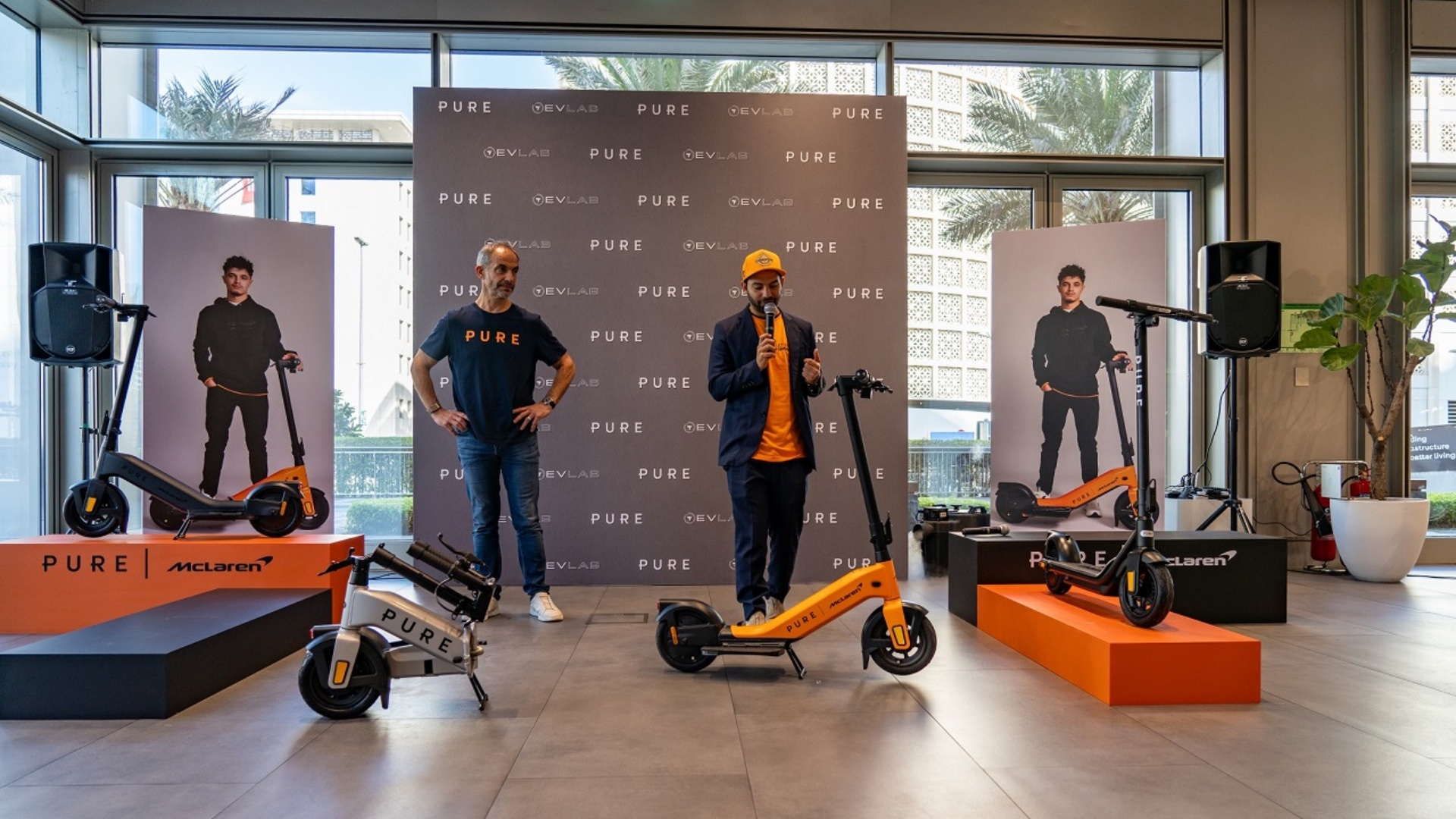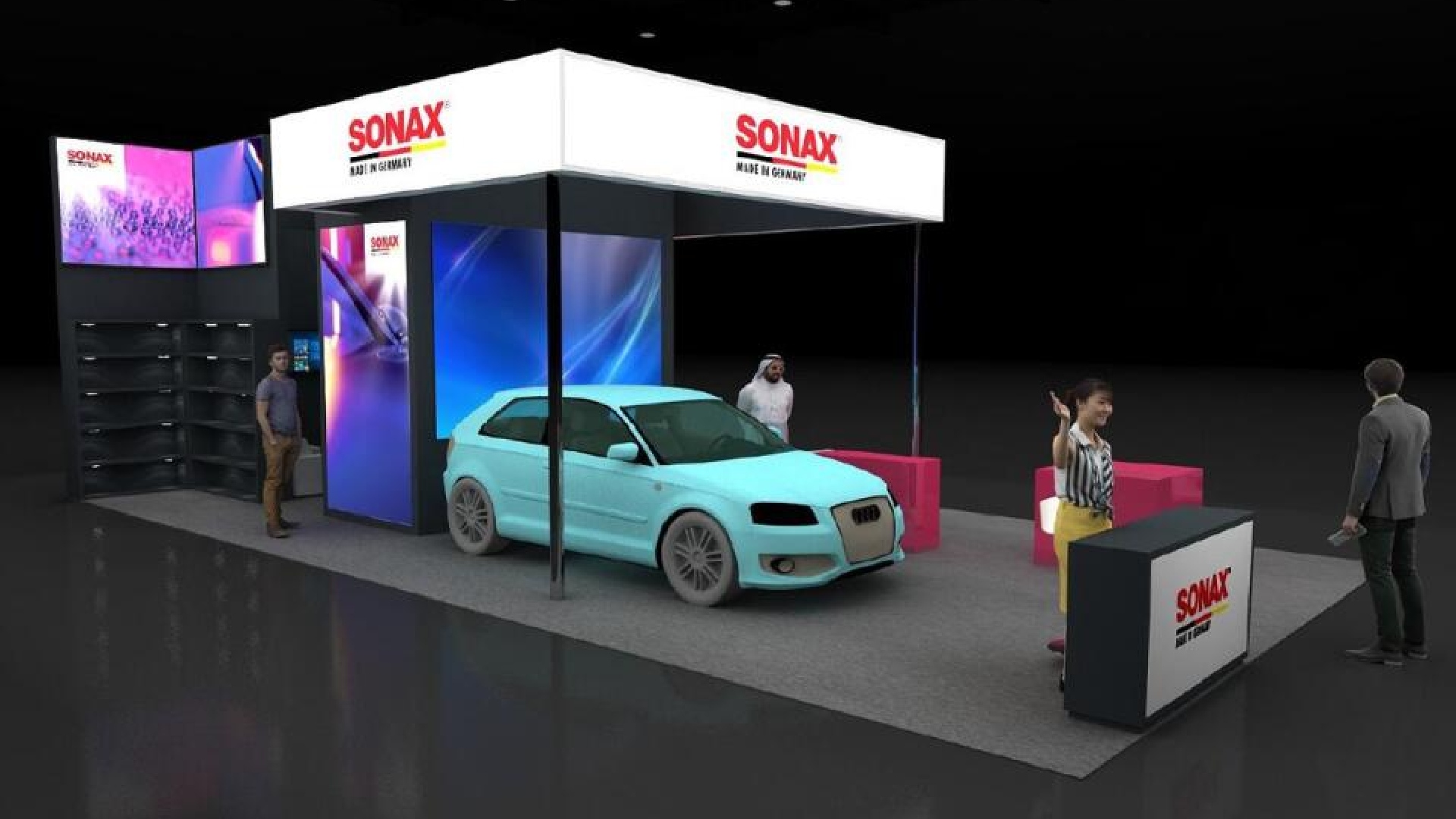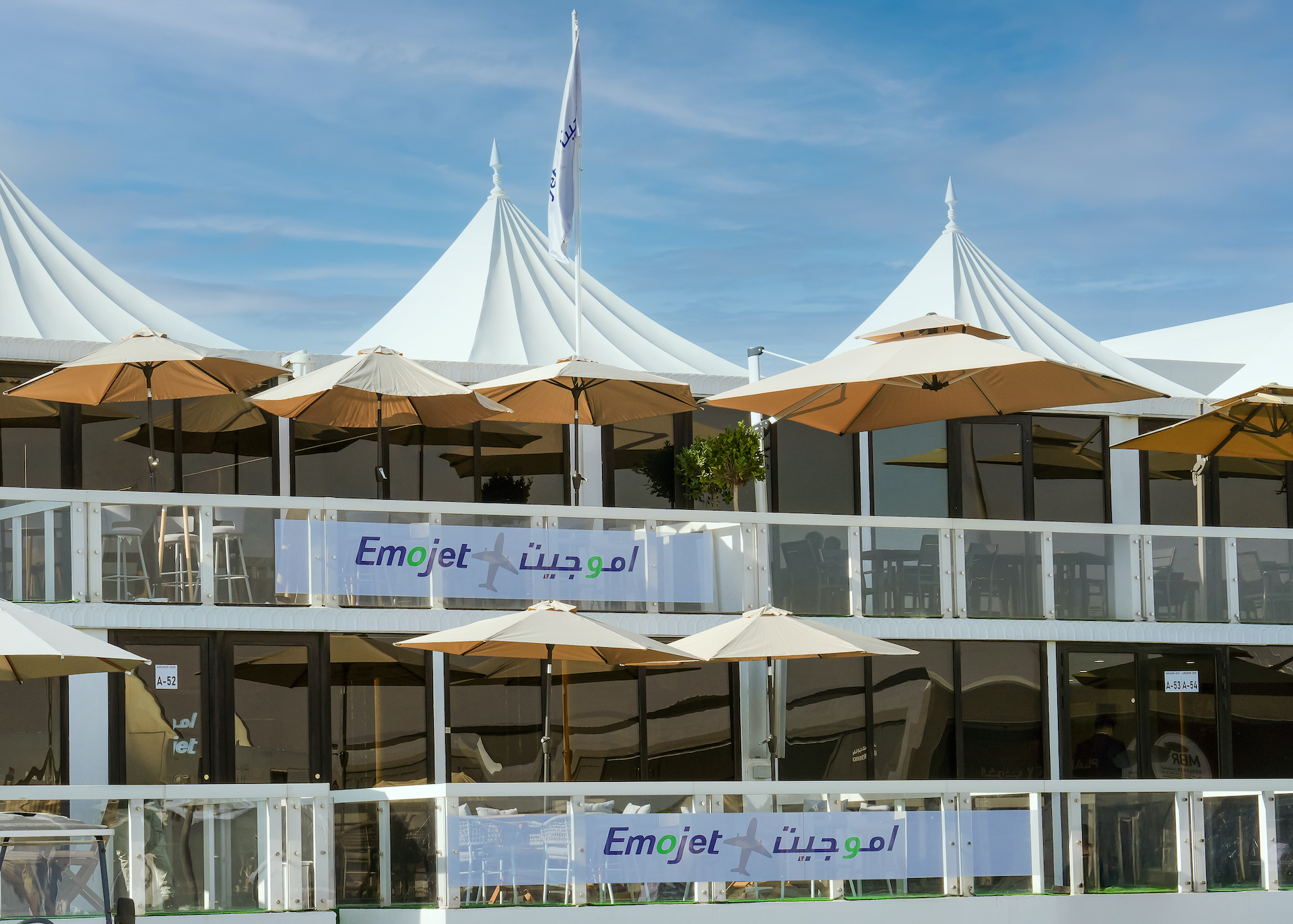Automotive
7 Compelling Reasons to go Electric (EV)

Electric vehicles (EVs) are no longer a futuristic novelty — they’re a fast-growing reality across the GCC, aligning directly with the region’s ambitious sustainability goals. Countries like Saudi Arabia, the UAE, and Egypt have made bold commitments to decarbonization through initiatives like Vision 2030 and Net Zero 2050.
EV adoption is a vital piece of the puzzle — helping reduce greenhouse gas emissions, cut reliance on fossil fuels, and reshape the urban energy landscape. Backed by billions of dollars in public and private investment, this transition is moving quickly.
General Motors, with nearly a century of regional experience, is perfectly aligned with national priorities, empowering the future of mobility with an EV for every purse and purpose. In this feature, we explore seven compelling reasons why electric vehicles are not only viable—but vital—for the Middle East. From lowering lifetime ownership costs to driving innovation, strengthening economies, and delivering performance that rivals or exceeds traditional vehicles, the case for EVs has never been stronger.

1. It’s Cheaper Than You Think
While EVs may cost more upfront, the long-term savings are real — and significant. With fewer moving parts, no oil changes, and lower servicing needs, electric vehicles are much cheaper to maintain. Charging at home and at charging enabled parking spaces is far more affordable than fueling up, in addition to being more convenient. As every city transitions at its own pace, increased access to integrated home-charging solutions and partnerships with local governments and utilities will continue to help reduce adoption costs.
In fact, a 2023 Morning Consult survey showed that 70% of consumers in the UAE and 65% in Saudi Arabia are already considering EVs for their next vehicle — a clear sign of growing market readiness. According to PwC’s eMobility Outlook 2024, the UAE aims for 50% of all vehicles to be electric or hybrid by 2050, with maintenance and operational costs significantly lower than combustion vehicles due to fewer parts and reduced servicing needs.

2. Designed for Comfort, Power & Fun
EVs aren’t just cleaner — they’re fun to drive. Instant torque provides quick, effortless acceleration, while near-silent rides offer comfort in traffic and on long drives. Whether you’re cruising through the city or heading into the dunes, EVs deliver smooth performance, high ground clearance, and surprisingly strong power. From sleek sedans such as the Chevrolet Equinox EV to supercars like the Corvette E-ray and rugged trucks as the GMC HUMMER EV, as well as the luxurious with Cadillac OPTIQ and LYRIQ, there’s an EV to match every lifestyle in the Middle East.
3. The Experience Is Smarter — Personalized, Connected, and Always Evolving
Electric vehicles today are transforming the driving experience. They’re no longer just about getting from point A to point B — they’re intelligent, connected platforms designed to adapt to the needs of each driver.
Features like intuitive touch-screen interfaces, voice control, and over-the-air software updates allow the vehicle to improve over time, often without the need for a visit to the service center. AI-powered safety systems and real-time data integration help make every journey more informed, more convenient, and more secure.
Technology like OnStar adds another layer of support — offering real-time assistance, vehicle insights, and connectivity that enhances both safety and peace of mind on the road.
This shift toward connected mobility isn’t just about smarter vehicles. It’s about creating a more personalized, responsive, and seamless experience for every driver. With an EV, you’re not just purchasing a car; you’re entering a connected ecosystem that evolves with you and adapts to your needs over time.

4. Range Anxiety? Not Anymore
One of the biggest EV myths is that you’ll constantly be searching for a charger. But today’s EVs offer more than enough range for daily driving — and the infrastructure is catching up fast. Most drivers charge at home overnight, just like a smartphone.
The UAE has approximately 1,500+ EV charging points, and aims to install 500 additional nationwide by end‑2025. In 2024, the number of charging stations for EVs in Egypt reached 238. Public and private players are rapidly expanding charging networks in Egypt which targets nearly 1000 stations by end of 2025. As of April 2025, Saudi Arabia has a total of 2,803 charging points, with the majority installed at corporate and residential locations. Their goals include establishing up to 30,000 EV charging stations by 2030. In Jordan, there are 107 EV charging stations, with an additional 611 planned once licensing procedures are complete.
General Motors vehicles are among the top in the market, and some models are the highest range available. For example, the GMC HUMMER EV can go up to 578km of range (GM estimate) on full charge, whereas a smaller car such as the Chevrolet Spark will charge up to 360km. GM is working with partners to ensure accessible charging, including turn-key home solutions and over 110 charging stations across GM regional dealerships. Our collaboration with ministries and smart city initiatives further integrates EV infrastructure with future urban planning, ensuring charging is seamless and accessible.

5. EVs Last Longer Than You Expect
Modern EVs are built to go distance. Studies show they can last as long — or even longer — than traditional petrol or diesel vehicles. Electric motors face less wear and tear, and today’s EV batteries are designed to be durable, even in harsh Middle Eastern climates.
With proper care, an EV can be a long-term investment. Battery packs today are built to last 10 to 20 years, EV batteries in the Middle East typically retain 70–80% capacity after 200,000–240,000 km, enduring 8–15 years even in harsh hot climates. With thermal management and moderate charging habits, degradation remains low—about 1–2% annually, extending useful life toward 20 years.
6. It’s a Smarter Environmental Choice — Without Compromise
You don’t have to be a climate activist to appreciate cleaner air and quieter streets. EVs produce zero tailpipe emissions, helping reduce air pollution in urban areas. Even when accounting for battery production, EVs generate far fewer lifetime emissions than petrol vehicles. In a region working hard to balance economic growth with sustainability, going electric is a smart, future-proof decision that integrates seamlessly with your lifestyle and values.

7. Incentives, Perks & Priority Access
Many governments are offering incentives to boost EV adoption — from free public charging to reduced registration fees, toll exemptions, and designated EV parking spots.
For instance, electric vehicle owners in Dubai enjoy a range of attractive incentives designed to encourage adoption. These include access to over 30,000 free parking spaces, exemption from Salik (toll) fees, and discounted rates on vehicle registration and renewals. In Saudi Arabia, EV owners benefit from a 50% discount on licensing fees compared to traditional gasoline-powered cars, while hybrid vehicles receive a 24% reduction.
Oman introduced a three-year incentive program in 2023 that offered exemptions from customs duties, VAT, and vehicle registration fees for EVs and their parts. These incentives applied to fully electric or hydrogen-powered vehicles registered in Oman and are subject to extension based on government review.
Automotive
EV LAB invests in Pure Electric, kicks off partnership with new lineup of e-scooters

EV LAB, the region’s first omni-channel multi-brand EV store, has invested in Pure Electric, a global specialist in electric micromobility founded by British entrepreneur Adam Norris, and will serve as the brand’s exclusive partner across the Middle East. The partnership kicked off with the launch of Pure Electric’s three new e-scooters in the UAE – Air⁴, Pure x McLaren, and Pure Flex. The collaboration marks a pivotal move towards advancing sustainable transport solutions and supporting the UAE’s goal of reaching Net Zero by 2050.
Under this new venture, EV LAB will feature Pure Electric products across its five stores in the region. This will include the new lineup, primarily designed for urban commuters, lifestyle riders, tech-forward consumers, and micromobility enthusiasts, offering a potent blend of performance, innovation, and purposeful design tailored for the region’s fast-paced city environment. The latest models include the Air⁴, a remastered fourth-generation classic e-ride with a smoother, more powerful ride featuring a 710W motor and 30km range; the Pure x Mclaren finished in McLaren’s iconic orange livery, built with active steering stabilisation, a 900W motor, and a 50km range; and the Pure flex, the world’s most compact scooter featuring a unique forward-facing stance, ultra-compact design, and a 45km range, built for maximum control and stability.
Kevin Chalhoub, CEO and founder of EV LAB, stated, “Collaborating with Pure Electric to launch these unique, state-of-the-art e-scooters in the UAE is an incredible opportunity to drive innovation and sustainability by reducing carbon emissions that will help prevent wider climate problems across the Middle East. Over the past few years, consumers in the region have grown more environmentally conscious and are looking for smarter and greener approaches to travel. These new models will help us advance our mission of creating a dynamic ecosystem in which brands, consumers, and experts can connect through accessible, sustainable, and meaningful electric mobility experiences.”
Micromobility is becoming increasingly popular in the United Arab Emirates due to factors such as the rise in eco-conscious consumers, urbanisation, and traffic congestion within cities. With a compound annual growth rate (CAGR) of 12.2 per cent, the UAE micromobility market is projected to reach USD 2,014.8 million by 2030. Aligning with this growth, EV LAB, as the first multi-brand electric mobility platform in the region, is building a thriving network of EV businesses, experts, and enthusiasts, while offering advanced electric mobility solutions for land, air, and sea, including boats and surfboards, cars, scooters, and air taxis. Through the latest partnership, the company continues to push forward the transition to electric mobility within the UAE and across the Middle East through knowledge exchange and strategic partnerships.
Adam Norris, CEO and Founder of Pure Electric, said: “Pure Electric was formed with the goal of revolutionising personal transport and preparing cities for future generations. Our latest collaboration with EV LAB is a step towards this vision and reinforces our commitment to advancing smarter, greener travel solutions. At Pure Electric, we believe people must begin making thoughtful mobility decisions, not only for practical reasons but also for the wellbeing of our cities and the environment.”
“This new partnership is also of great importance to me, as it comes at the same time my son, Lando, has secured his first Formula 1 World Championship title in Abu Dhabi. I am incredibly proud of these milestones, both as a father and business owner, and look forward to what lies ahead,” Norris added.
Pure Electric, since its founding in 2018, has quickly grown into eight nations owing to its clear vision, precision engineering, and a relentless commitment to delivering quality riding experiences. The company’s global momentum, paired with EV LAB’s regional leadership, opens the door to a new era of micromobility in the country.
Automotive
SONAX ACCELERATES DOUBLE-DIGIT GROWTH ACROSS GCC AND MIDDLE EAST WITH UAE DISTRIBUTOR RAMY AUTOMOTIVE

SONAX GmbH, the global leader in car care solutions, has recorded consistent double-digit growth across the GCC and wider Middle East region, averaging between 10% and 20% over the past five years. This sustained expansion underscores the company’s strong foothold in the region and its position as the number-one premium car care brand, reinforced by a 35-year partnership with its UAE distributor, RAMY Automotive.
Building on this success, SONAX will showcase its next-generation innovations at Automechanika Dubai 2025, where it will unveil two new additions to its Ceramic Coating line, CC Glass and CC Rim. These latest formulations highlight SONAX’s continuous investment in innovation, performance, and product excellence.
“Our continued double-digit growth underscores the strong trust and loyalty that SONAX has built among car enthusiasts and professionals across the UAE,” said Edwin Berberi, Senior Business Development Manager SONAX, GmbH. “At RAMY Automotive, we take pride in representing SONAX in the UAE and strengthening its legacy of excellence in car care. We are committed to further expanding our footprint while upholding the highest standards of quality and customer satisfaction across the region.”
Founded in 1950 in Neuburg, Germany, SONAX has built its reputation on premium quality, continuous research, and technical advancement. Its comprehensive portfolio spans car, motorcycle, bicycle, and industrial care, from manual detailing to automated washing, offering both private and professional users products that meet the highest global standards.
The GCC is one of the fastest-growing markets for high-end vehicle maintenance, driven by discerning customers who own luxury cars and demand superior quality care. As such, SONAX has continued to attract both individual car enthusiasts and commercial clients seeking long-lasting protection and professional-grade efficiency.
“Automechanika Dubai provides the perfect platform to strengthen our connections with customers and partners while introducing our latest innovations tailored for regional needs,” added Berberi. “Our mission remains clear: to deliver premium, sustainable, and high-performance solutions that make every vehicle shine.”
SONAX’s advanced Ceramic Coating products have set industry benchmarks since the launch of Nano Paint Protect in 2006. Today, the brand leads with a complete portfolio that includes CC Vinyl+PPF and CC Plastic+Rubber, and now expands further with the 2026 innovations CC Glass and CC Rim.
As part of its environmental commitment, SONAX integrates sustainability across its operations and product development. The company is ISO 14001 certified for its environmental management system and participates in the Responsible Care initiative, ensuring continuous improvement in environmental, health, and safety standards. Most of its products are made with 99.75% natural ingredients, reflecting its dedication to creating environmentally conscious products without compromising performance.
With a strong partner network across the GCC and Middle East, SONAX is uniquely positioned to serve regional and international customers. Its cooperation with RAMY Automotive in the UAE has been a cornerstone of its regional strategy, ensuring that customers across all markets receive the same quality, service, and reliability synonymous with the SONAX brand.
Automotive
Emarat Showcases Emojet’s Aviation Fuel Leadership at Dubai Airshow 2025

Emirates Petroleum Company PJSC (Emarat), a pioneer in the UAE’s oil and gas industry, will highlight the strength of its aviation fuel business at Dubai Airshow 2025 through its aviation subsidiary, Emojet, one of the leading into-plane fuel service providers at Dubai International Airport and Al Maktoum International Airport (Dubai World Central). Emojet will host airline, airport and industry partners at Chalet A52 from 17–21 November 2025, between 10:00 AM and 5:30 PM at Al Maktoum International Airport.
A key pillar of Emarat’s portfolio, aviation fuel is delivered through Emojet, which has proudly served the UAE’s world-leading aviation industry since 1992. Today, Emojet supplies aviation fuel to many of the world’s leading international airlines at Dubai International Airport and Al Maktoum International Airport, delivering award-winning into-plane services built on safety, reliability and service excellence.
Ali Khalifa Al Shamsi, Chief Executive Officer of Emarat, said, “Dubai Airshow is a natural platform for Emarat and Emojet. For more than three decades, we have been privileged to fuel the growth of the UAE’s aviation sector and support Dubai’s rise as a global hub for passengers and cargo. Through Emojet, we combine best-in-class infrastructure, rigorous safety and operational discipline with a partnership mindset that puts our customers’ network and growth ambitions at the centre. At Dubai Airshow 2025, we look forward to reinforcing our commitment to the aviation ecosystem and exploring new collaborations that will help shape the future of air connectivity in our region.”
At Dubai Airshow 2025, Emojet will focus on deepening existing relationships and building new partnerships with airlines, cargo operators, airports, and logistics players from across the region and beyond. This follows Emojet’s July 2024 agreement with Emirates SkyCargo to supply aviation fuel for the airline’s cargo operations at Al Maktoum International Airport – a model of the strategic collaborations the brand aims to replicate and expand during the show.
Salem Bin Suloom, Vice President – Aviation Sales at Emarat, said, “Emojet’s promise is simple – safe, reliable and efficient fueling, every time. Our customers operate in highly demanding environments, and they rely on us to deliver on-time performance, technical excellence and responsive service across every flight and every turnaround. At Dubai Airshow 2025, our focus is on listening to our partners, understanding their evolving operational needs and identifying new ways we can support them – whether through long-term supply agreements, expanded into-plane services, or new collaborations with airports and operators across the wider region. We warmly invite existing and prospective partners to visit us to discuss how Emojet can fuel their future plans.”
Emojet stands apart through its modern fleet of refuelling equipment, advanced control systems and highly trained operational teams. The company utilises the latest electronic data capture and interface systems to drive efficiency, accuracy and transparency, ensuring that its operations and equipment exceed mandated IATA standards.
-

 Tech News1 year ago
Tech News1 year agoDenodo Bolsters Executive Team by Hiring Christophe Culine as its Chief Revenue Officer
-

 VAR8 months ago
VAR8 months agoMicrosoft Launches New Surface Copilot+ PCs for Business
-

 Tech Interviews2 years ago
Tech Interviews2 years agoNavigating the Cybersecurity Landscape in Hybrid Work Environments
-

 Tech News5 months ago
Tech News5 months agoNothing Launches flagship Nothing Phone (3) and Headphone (1) in theme with the Iconic Museum of the Future in Dubai
-

 Tech News2 years ago
Tech News2 years agoBrighton College Abu Dhabi and Brighton College Al Ain Donate 954 IT Devices in Support of ‘Donate Your Own Device’ Campaign
-

 Editorial1 year ago
Editorial1 year agoCelebrating UAE National Day: A Legacy of Leadership and Technological Innovation
-

 VAR1 year ago
VAR1 year agoSamsung Galaxy Z Fold6 vs Google Pixel 9 Pro Fold: Clash Of The Folding Phenoms
-

 Cover Story9 months ago
Cover Story9 months agoUnifonic Leading the Future of AI-Driven Customer Engagement


























